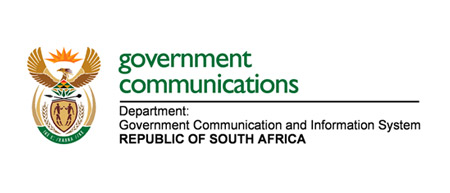Government Communication Information System (GCIS) National Energy Efficiency Public Relations Campaign


Strategy consulting: National Energy Efficiency Public Relations Campaign for the Government Communication Information System (GCIS)
Public relations is a communication discipline that actively drives towards a specific objective in an organised manner by managing the flow of information between the organisation in question and its target audience, usually political or social of nature. The objective is generally to leverage the most suited media available and to build, influence or manage the organisation’s image amongst its target audiences, which could comprise members of the public and/or other stakeholders.
Client profile
The Government Communication and Information System (GCIS) was established in 1998 to provide strategic communication leadership and support to all Government departments.
The challenge at hand
When widespread blackouts hit the country in 2008, the nation woke up to an energy crisis and Government realised that the country’s energy resources are not limitless. In addition, South Africa made commitments at Copenhagen, to support the World in mitigating climate change by actively reducing its carbon footprint. Early in 2010, an Inter-Ministerial Committee on Energy (IMC) was formed to address issues pertinent to energy in South Africa. The IMC then in turn created an Inter-departmental Technical Task Team on Energy Efficiency (IDTTT-EE) to execute the tasks identified. GCIS served as Work Group 9 of the IDTTT-EE – its mandate was communication. Subsequently, GCIS appointed Stone to design and manage an energy efficiency campaign that would create national awareness about the importance of energy and that would inspire all South Africans to be more energy efficient.
Stone’s approach to meeting the need
In collaboration with GCIS, Stone applied its unique Pebble Ring Thinking© methodology to set in motion a comprehensive consultative process centred on the campaign’s objectives. It involved extensive gathering of critical data for input into the strategy development process. This included widespread research, engagement with all relevant stakeholders to identify key issues, as well as upfront, detailed mapping of audiences. A campaign communication strategy was compiled in record time, including a work plan with strategic deliverables, as well as clear outcomes aimed at achieving maximum impact, within the time frames and available budget. Stone then provided a turnkey solution for seamless implementation of these recommended interventions at no mark-up to the client through the Circle of Stones – all specialists in their own fields, driven by the same Stone values. Stone also appointed a dedicated account manager, who acted as an internal resource on GCIS’s site and ensured seamless, speedy integration between the client and the agency.
Results achieved and value added for GCIS
Stone conceptualised a strong, memorable brand – Save It! – to assist in bringing about behavioural change through four key communication platforms: internal communication, BTL and ATL communication for public awareness, media mobilisation and a virtual network and newsletter. The combined efforts of Stone, the Circle of Stones and GCIS resulted in the following:
- A large-scale awareness amongst Government officials who work in the Department of Public Works’ buildings, due to a collateral series that promoted energy efficiency in conjunction with informative energy efficiency workshops. The collateral, included A1 posters, DL leaflets, stickers for appliances and electronic screen savers. These efforts not only led to increased awareness, but also to constructive engagement and, to Government officials leading by example.
- A series of four highly informative, five-minute energy efficiency inserts flighted on e-TV that reached a mass public audience and created widespread awareness.
- Eight fact sheets on practical, understandable energy efficiency and saving hints that were distributed to community newspapers and media nationwide to obtain national reach and awareness.
- A series of opinion pieces and op-eds with specific reference to the IRP2010 and South Africa’s preparation for a green economy. The aim was a specific energy saving appeal to commercial and large power users.
- A virtual network and newsletter distributed to a large number of key stakeholders in the energy efficiency arena who responded positively and made contributions. These newsletters were also picked up by mainstream media and published in several publications.
- Three very successful media round tables to mobilise, inform and educate the media about energy efficiency related topics, with a view to obtain maximum exposure to encourage and enable society at large to participate in national energy matters. These media round tables were well attended by key media members and resulted in substantial exposure in print, on radio and television. The efforts also had spin-offs in the form of additional television and radio interviews with the Minister of Energy and the spokesperson of the Department of Energy.






